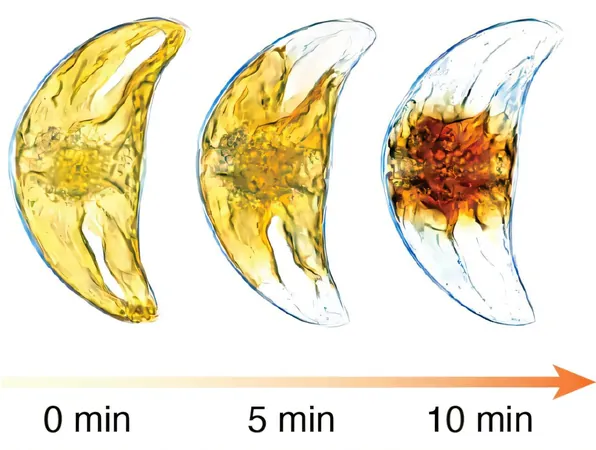
Revolutionary Brain Mapping: The Key to Smarter Urban Planning
2024-11-21
Author: Wei
Introduction
As urbanization continues to rise at a staggering pace, with the global urban population growing from 33% in 1960 to a remarkable 57% in 2023, the way we design our cities has never been more crucial. Researchers from Michigan State University are pioneering a groundbreaking approach that leverages brain activity to revolutionize urban planning, paving the way for cities that prioritize the well-being of their residents.
Research Overview
Led by Dar Meshi, an associate professor and director of the Social Media and Neuroscience Lab, this innovative study is featured in the esteemed journal *Nature Cities*. The research, which involved collaboration with experts from the University of Lisbon, reveals how the brain's reward system can significantly influence human interactions with urban environments, ultimately guiding the design of cities focused on sustainable living.
The Challenges of Urbanization
Urban areas typically boast better access to education and healthcare, as well as a diverse array of cultural and recreational activities—features that enhance living standards. However, rapid urbanization also brings significant challenges, including inadequate green spaces, increased traffic congestion, and social inequities. These pressing issues highlight the urgent need for strategies that promote sustainable urban development that considers health, safety, and the overall well-being of residents.
Neurourbanism and Methodology
Meshi and his team employed principles from the emerging field of neurourbanism, which studies the interactions between the human brain and urban environments. By using cutting-edge brain-scanning technology—specifically functional magnetic resonance imaging (fMRI)—researchers measured brain activity connected to the reward system during urban exploration. The goal was to understand better how urban design can be optimized for the cognitive, emotional, and physical well-being of every city dweller.
The Role of the vmPFC
The research focused on the ventromedial prefrontal cortex (vmPFC), a brain region essential for valuation and decision-making. Past studies have shown that activity in the vmPFC can predict various behaviors, from food preferences to financial decisions. This study took it a step further by examining how this brain region’s activity correlates with urban visitation patterns.
Experimental Findings
In a groundbreaking experiment, 77 U.S. participants, who'd never been to Lisbon, underwent fMRI scans while viewing and rating photos of the city's urban landscapes geotagged from Flickr. The findings are eye-opening: the neural activity in the vmPFC can forecast which urban areas people are likely to visit based on their perceived value.
Implications of the Research
"People are naturally inclined to seek out places that offer the highest value," Meshi noted. "Certain urban environments trigger stronger brain responses, suggesting they are more appealing for visitation." The study implies that our motivations for visiting urban spaces extend beyond aesthetic enjoyment; they encompass social and cultural significance as well. Historic districts or culturally rich locales, even if not visually stunning, can attract visitors due to their inherent value.
Encoding Urban-Related Information
Kaur, a postdoctoral researcher at MSU, emphasized that this research unveils how our brains encode urban-related information and influence our choices. She explained, “The insights from our study can aid in crafting human-centric cities, thoughtfully designed around how individuals perceive and engage with their environment.”
Future Implications in Urban Planning
By integrating these extraordinary findings into urban infrastructure and services, cities can become better equipped to enhance livability, promote well-being, and enable residents to navigate easily from one location to another. As urban centers continue to grow, the implications of this research could lead to transformative changes in the way we experience and interact with our cities, making them more engaging, functional, and healthy spaces for all.
Conclusion
The future of urban planning is at a tipping point, and it’s clear: smarter design informed by our brain's responses could hold the key to creating thriving, sustainable urban environments.




 Brasil (PT)
Brasil (PT)
 Canada (EN)
Canada (EN)
 Chile (ES)
Chile (ES)
 España (ES)
España (ES)
 France (FR)
France (FR)
 Hong Kong (EN)
Hong Kong (EN)
 Italia (IT)
Italia (IT)
 日本 (JA)
日本 (JA)
 Magyarország (HU)
Magyarország (HU)
 Norge (NO)
Norge (NO)
 Polska (PL)
Polska (PL)
 Schweiz (DE)
Schweiz (DE)
 Singapore (EN)
Singapore (EN)
 Sverige (SV)
Sverige (SV)
 Suomi (FI)
Suomi (FI)
 Türkiye (TR)
Türkiye (TR)